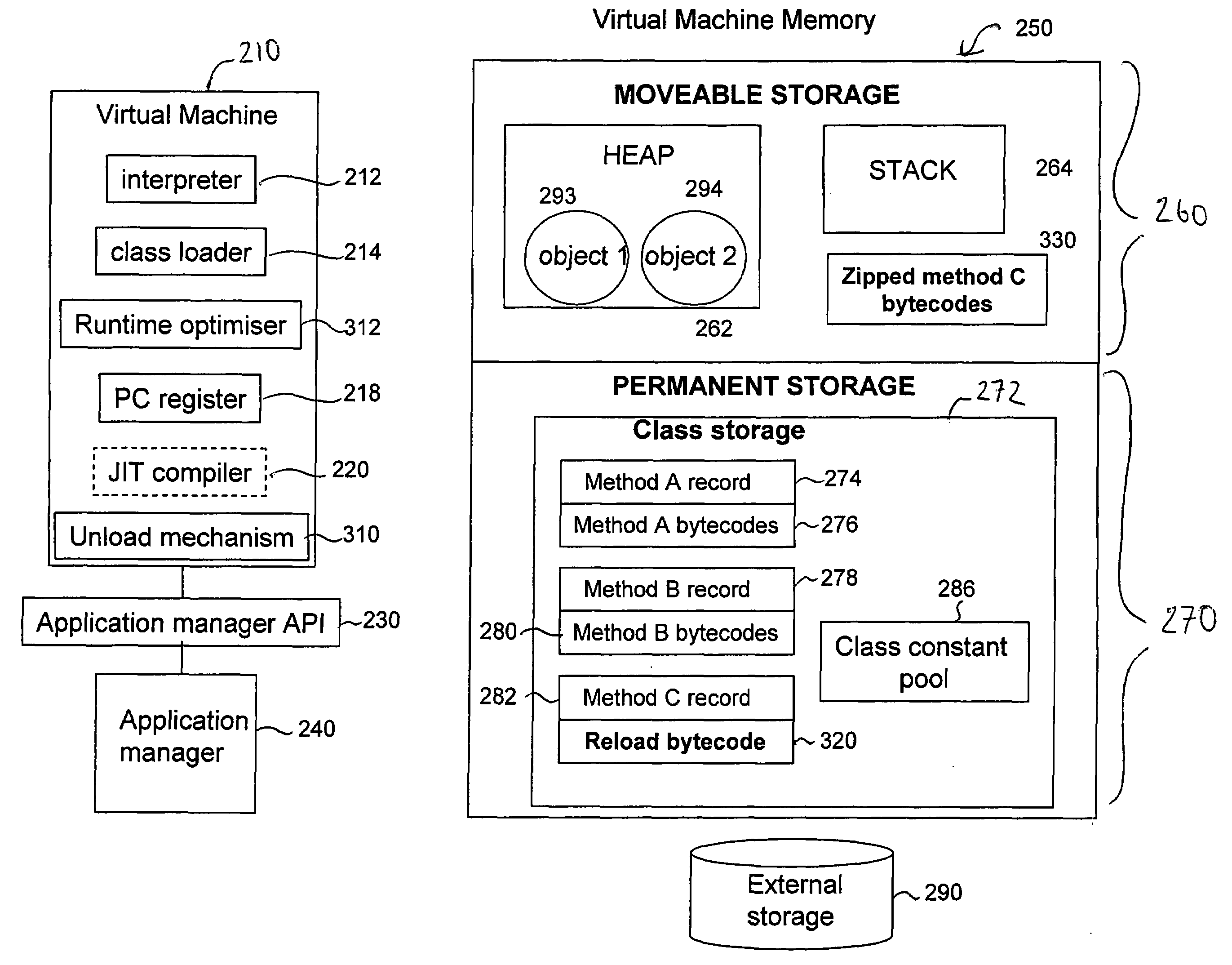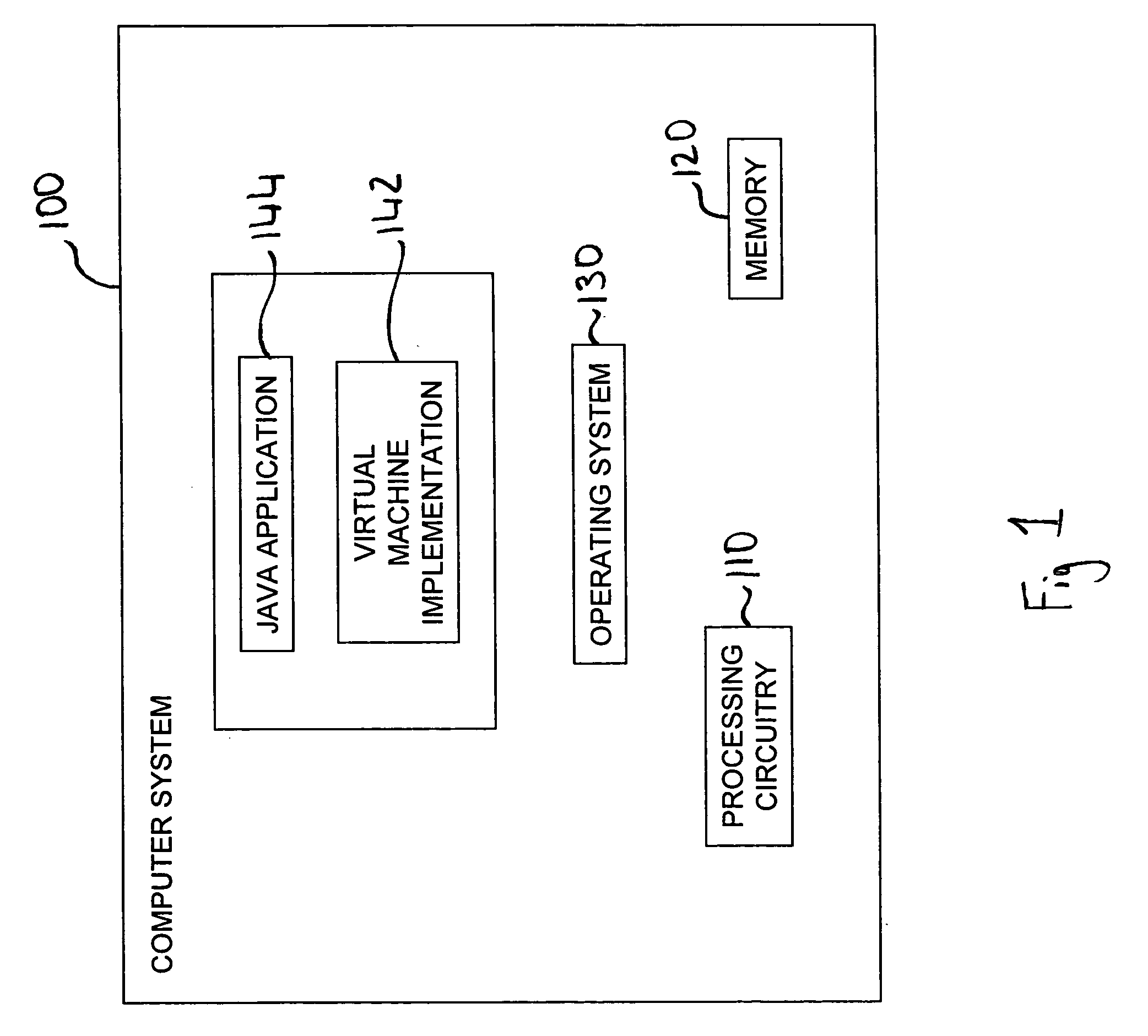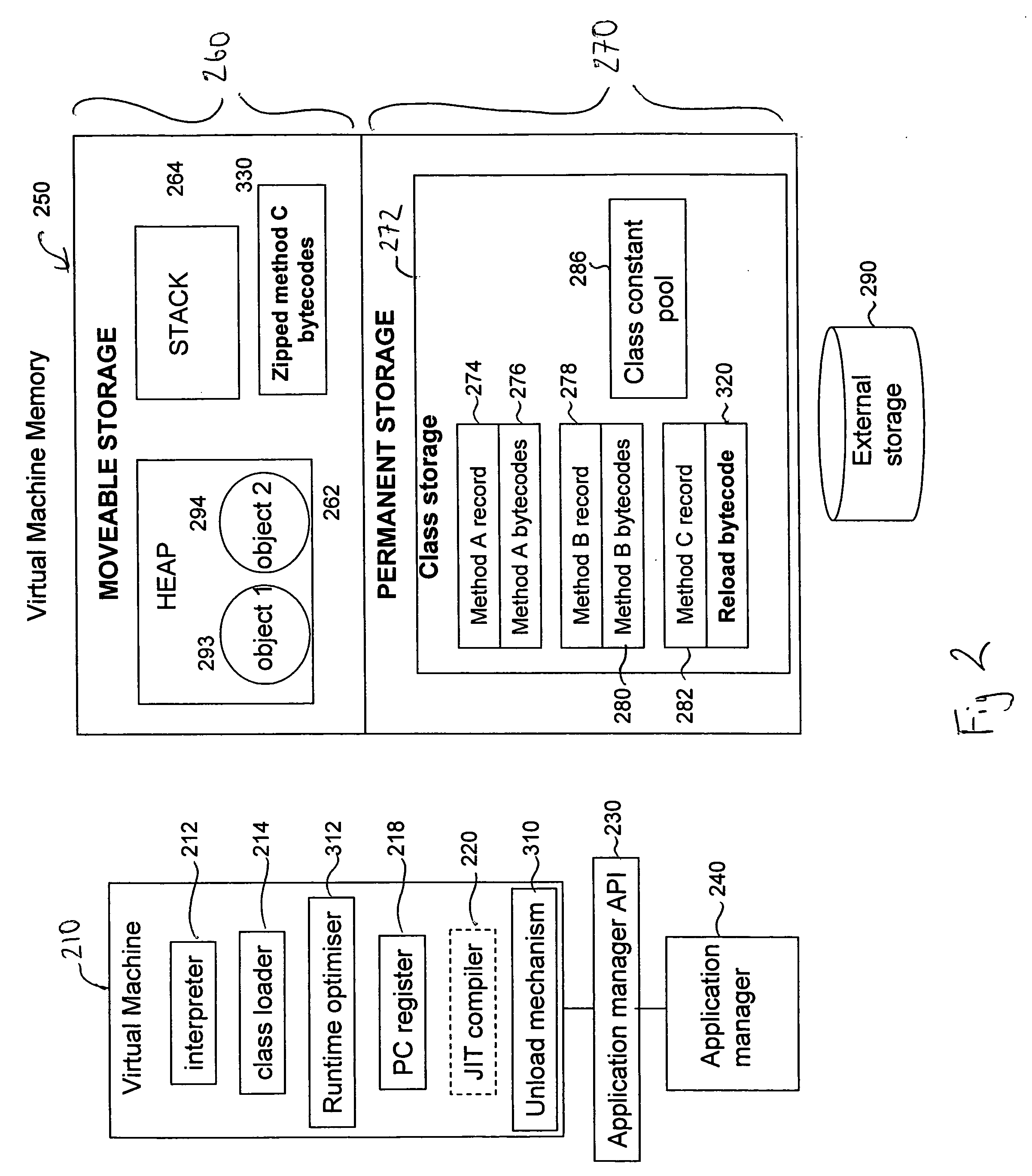Reducing memory usage of a data processing task performed using a virtual machine
- Summary
- Abstract
- Description
- Claims
- Application Information
AI Technical Summary
Benefits of technology
Problems solved by technology
Method used
Image
Examples
Embodiment Construction
[0062]FIG. 1 schematically illustrates a computer system 100 including processing circuitry 110 which is used to execute software loaded into a memory 120. The 5 computer system 100 runs an operating system 130, on top of which is provided a Java Virtual Machine 142. The Java Virtual Machine 142 is software that runs on a computer system 100 and, from the point of view of the operating system 130, the Java Virtual Machine looks like a software application. However, the Java Virtual Machine 142 functions as a virtual operating system, supporting one or more Java applications such as a Java application 144 illustrated.
[0063]The Java Virtual Machine 142 interprets compiled Java binary code called bytecode for the processing circuitry 110 corresponding to a given hardware platform. The Java Virtual Machine 142 allows Java application programs to be run on any hardware platform without having to be rewritten or recompiled by the programmer for each separate hardware platform. The Java Vi...
PUM
 Login to View More
Login to View More Abstract
Description
Claims
Application Information
 Login to View More
Login to View More - R&D
- Intellectual Property
- Life Sciences
- Materials
- Tech Scout
- Unparalleled Data Quality
- Higher Quality Content
- 60% Fewer Hallucinations
Browse by: Latest US Patents, China's latest patents, Technical Efficacy Thesaurus, Application Domain, Technology Topic, Popular Technical Reports.
© 2025 PatSnap. All rights reserved.Legal|Privacy policy|Modern Slavery Act Transparency Statement|Sitemap|About US| Contact US: help@patsnap.com



